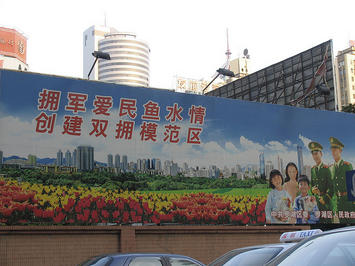
Seven thousand miles separate Arlington, Virginia and Shenzhen, China. Two continents apart, these two cities could not be more different. Yet they are similar, geopolitically and globally. The characteristics of today’s globalization have united and connected cities like Arlington and Shenzhen.
Arlington sits a stone’s throw from Washington, DC, just across the Potomac River. The city is adjacent to major technology service providers such as Booz Allen Hamilton, Northrop Grumman, and Lockheed Martin, along with a number of nationally ranked high schools and universities. Arlington is also the home of National Venture Capital Association (NVCA), the association that finances start-up businesses to promote innovation.
Arlington’s strength also depends on its impact on regional, national, and global markets. According to Gregg Easterbrook, author of Sonic Boom, private sector industries, particularly those financed by the venture capitalist firms, created 10.4 million jobs in 2007, contributing $2.3 trillion, roughly 18 percent of GDP, to the U.S. economy that year. Further, a combination of low unemployment rate and close proximity to the nation’s capital has made Arlington one of the most lucrative counties in the U.S.
Cities like Los Angeles, Miami, Phoenix, and Seattle took nearly 50 years to build, and another 50 to flourish in arts, culture, and finance. According to a New Economist report, the city of Shenzhen, by contrast, took 20 years to become one of the busiest commerce centers in the world. During that time, it built one of the top five seaports in the world. The city today is home to nine million people and the ninth tallest building in the world.
Once a small fishing town in southern China, Shenzhen gradually has become a city to invest and live in because of its innovative tax and foreign investment policies. During the last 30 years its growth has skyrocketed. Compared with a national average growth of 9.8%, Shenzhen’s economy has grown at a rate of 25%. The city is home to the second largest battery producer in the world, and expects to become a leading global producer of electric cars.
The idea of a free market in China has contributed to the evolutionary change of Shenzhen. China’s transformation from a one-party ruling country to a democratic one is arguable, but free market-style economies are spreading across cities in China.
While China’s GDP has grown dramatically, the inequality between the rich and poor has also widened. Easterbrook asserts that China also has managed to reduce its poverty: Twenty years ago 260 million people lived in poverty, but by 2009 that number dropped to 40 million.
Cities like Arlington and Shenzhen have become global centers by virtue of their strategic importance and adaptive capabilities. Resources, both human and technological, have converged, localized, and united to create a common global identity.
Both Arlington and Shenzhen had much smaller populations 20 years ago; both cities thrived under the development of public transportation infrastructure. In Arlington, the “smart development” in transportation depended on its metro stations. Shenzhen thrived under the development of one of the largest ports in the world, which brings in commerce and supplies fuel for economic activities to the city.
Technology was at the core of these developments, which brought people to the cities in search of employment and to build communities. Lewis Mumford, the renowned historian and political scientist, said that in order for cities to thrive an energetic mass of people must be assembled under a strong leadership “for regimenting men and mastering nature, directing the community itself to the service of the good.”
Parag Khanna, a renowned author on urban issues, describes the effect of technology and globalization this way: “The world is getting both bigger and smaller: more people, more countries, more money, but also faster speeds, shorter distances, and less time to react. It is plain to see that no one is actually in control.”
The 2008 recession hit cities across the world. But Arlington and Shenzhen weathered the ill effects grew, by virtue of their technology, and investment. With its energy efficient transportation system, nationally ranked educational institutions, and human capital, Arlington remained a robust city. It also has one of the most diverse and educated populations in the U.S. The residents of Arlington come from 125 different countries; 35% of its population, the highest in the country, hold graduate degrees.
Arlington and Shenzhen are not two cities divided by their geographical boundaries. The confluence of innovation, technology, and competition has connected their two continents – Asia and North America.This interconnectivity redefines the nature of global relationships. According to Khanna, this new relationship is called “inter-imperial relations – not international or inter-civilizational,” and it is these relationships that shape the world.
The two cities hold more similarities than differences. Both are thriving as a result of technological innovation, free market activities, and growth of their human capital. And both cities are now united under a common banner of globalization which promotes growth and prosperity. For cities across the globe to prosper, they must embrace innovative technologies. The adaptation requires continued investments in high-caliber educational institutions and a diverse population.
Photo by Paul Keller - a billboard in Shenzhen.
Iqbal Ahmed is a public policy graduate student at George Mason University, Arlington, VA. He studies global policies on technology, economy, politics, and social reform. He completed a study abroad program at Oxford University, UK in summer 2011 on European Union (EU) policies, and has written for Centre for Research and Globalization, Foreign Policy Journal, Journal of Foreign Relations, Foreign Policy in Focus, Global Politician, Eurasia Review, and NPR’s “This I Believe.”












